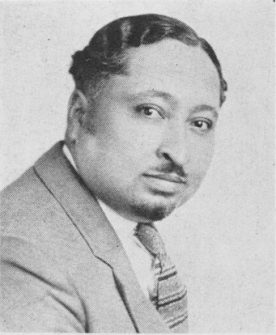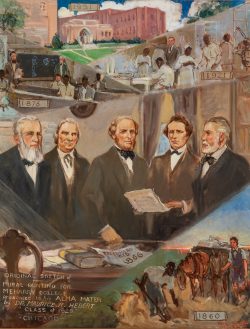William Edouard Scott, from a photograph of circa 1925. Schomburg Center for Research in Black Culture, Jean Blackwell Hutson Research and Reference Division, The New York Public Library.

William Edouard Scott 1884–1964
William Edouard Scott demonstrated his artistic talent while attending the Manual Training High School in his native Indianapolis, Indiana, where he was encouraged by his teacher, landscape painter Otto Stark. As a student at the Art Institute of Chicago, Scott won a prize that helped fund travel to Paris in 1908. He spent most of the following years in France, until the outbreak of World War I brought him back to Chicago. In Paris, Scott was mentored by expatriate African American painter Henry Ossawa Tanner, whom he revered as an artist “too great to be ranked,” and he studied at the Académie Julian and the Académie Colarossi, two art schools popular with Americans.i During his time abroad, Scott saw his works juried into the 1912 and 1913 annual exhibitions of the Société des Artistes Français as well as at the Royal Academy of Art in London. One of the paintings he exhibited in Paris was purchased by the government of Argentina.
By the time Scott settled back in Chicago in 1914 he was receiving abundant commissions for mural paintings for schools, hospitals, and other institutions, mostly in Indianapolis and Chicago; ultimately, he painted more than forty murals in Chicago churches alone. His major mural projects included work for A Century of Progress exposition in Chicago and murals made under WPA sponsorship. In 1943, he competed successfully, if anonymously, in a national competition to decorate the Recorder of Deeds building in Washington, D.C. In the course of his career Scott also painted numerous landscapes and portraits as well as undertaking commercial projects, including cover art for two 1918 issues of the NAACP’s journal The Crisis.
In the 1920s and 1930s, Scott was included in important exhibitions of works by African Americans that highlighted the achievements of Harlem Renaissance artists. In 1928 he was recognized as an outstanding “New Negro” artist with a medal from the Harmon Foundation. Three years later, a fellowship from the Rosenwald Foundation allowed Scott to spend eighteen months in Haiti, where he painted prolifically. Highly honored in Haiti, Scott was also influenced by its light and color and by its distinctive Black culture. He began to use more vivid hues, at the same time turning his focus to everyday black life and folkways, then emerging as an inspiration for African American artists. In 1955, he traveled to Mexico to paint, but his stay was cut short by complications of diabetes, to which he lost a leg in 1957 and his life seven years later.
In his last decades, Scott was honored as an elder stateman, the “dean of Negro artists.”ii In addition to forging a remarkably successful career, he was an influential advocate for the development of African American art. Scott was instrumental in shaping a new trend in favor of the ordinary African American as a dignified artistic subject, while he remained fundamentally committed to an aesthetic language of naturalistic representation and uplift rooted in his academic training. His many murals on historical themes picture the struggles, achievements, and potential of African Americans.
Wendy Greenhouse, PhD
i Edgar T. Rouzeau, “Compete with White Artists, Advises Wm. Edouard Scott, Who Has Done So,” New York Amsterdam News, Mar. 8, 1933.
ii “William E. Scott, 90; Dean of Negro Artists,” Washington Post, May 17, 1964.
